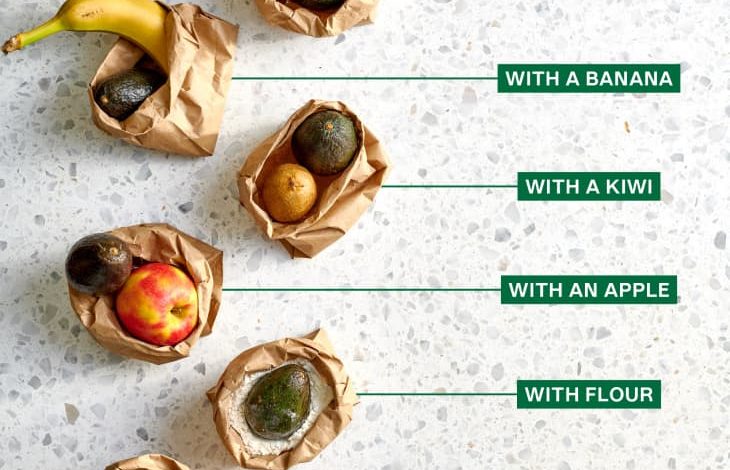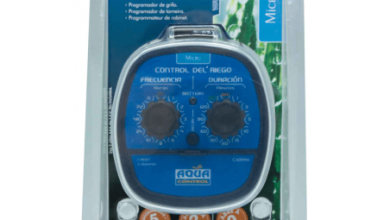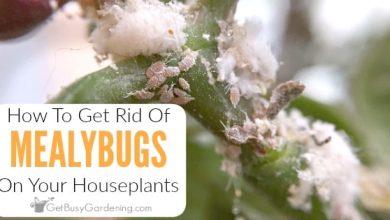How to Ripen an Avocado: The Best Tips and Tricks

Hello farmers! We have all, at some time, observed that certain fruits such as tomatoes or avocados change their appearance since we bought them. However, there are others such as oranges or lemons that stop ripening once they are harvested.

In today’s article we will talk about the differences between these types of fruits that continue to ripen and those that do not, also known as: climacteric and non-climacteric fruits. In addition, we will give some tips to make our avocados ripen faster.
Fruit ripening
The ripening process is made up of a set of changes (morphological, physiological and biochemical) that lead to the formation of a fruit suitable for consumption.
- The fruit reaches its proper size.
- They soften and accumulate sugars.
- They change color: During ripening the chlorophylls (responsible for the green color) are destroyed and for this reason the fruit acquires other colors.
- They change scent.
- Production of ethylene (natural hormone produced by plants to mature).
Difference between climacteric and non-climacteric fruits
As you know, there are many types of classifications for fruits. However, there is one that divides them into climacteric and non-climacteric fruits, which has to do with their ability to ripen once harvested. Next, we will talk about each of them.
climacteric fruits
Climacteric fruits are those that are capable of ripening after being separated from the plant. This means that we can buy an avocado or a green tomato at the greengrocer and let it ripen in the fruit bowl at home.
These fruits do not ripen constantly but rather show an increase in their ripening (phase known as climacteric) due to the production of ethylene (the ripening hormone that we mentioned earlier). Sometimes, what is done in large productions to obtain the fruits at the right time is to apply ethylene, thus increasing the speed of ripening.
Most of the time, this type of fruit is harvested early (unripe) so that after going through prolonged periods of transport and storage they are in perfect condition when they are going to be consumed.
Here is a list of the main climacteric fruits:
- Apple
- Avocado
- Apricot
- Khaki
- Plum
- Fig
- Banana
- Kiwi
- Mango
- Peach
- Cantaloupe
- Nectarine
- Papaya
- Pear
- Tomatoes
non-climacteric fruits
Non-climacteric fruits, unlike the previous ones, stop ripening once they are cut from the plant. There is no significant increase in ethylene production, but they mature steadily. In this case, it is useless to apply ethylene exogenously. Therefore, the harvest must be done at the right time.
Here is a list of the main non-climacteric fruits:
- Orange
- Mandarin
- Lemon
- Lime
- Pumpkin
- Grape
- Olive
- Grenade
- Pineapple
- Strawberry
- Raspberry
- Pepper
- Cucumber
Regulation of maturation by external factors
In order for our fruits to ripen, a set of conditions must be met.
- Temperature: it must be in a range between 6-30ºC. Below 6ºC and above 30ºC the fruits will have many problems to ripen.
- Gaseous composition of the atmosphere: a high concentration of oxygen is needed. If, on the contrary, the concentration of CO2 is excessive, the fruits will suffer a delay in their maturation.
- Atmospheric pressure also influences so that a reduction in it causes maturation to be delayed.
- Light: necessary for color changes in the maturation process.
Tips to ripen avocados fast
The avocado, as we have seen before, belongs to the group of climacteric fruits. That is, those that continue to mature once harvested.

Next, we are going to see some tricks so that this ripening process is faster and we can eat those avocados that we have bought as soon as possible!:
- For me, the best trick to speed up the ripening and preserve the flavor of the avocado is to put it together with a ripe fruit in a bag with holes. The ethylene (hormone produced by fruits to ripen) from one will stimulate the ripening of the other. That is, the ripe fruit will encourage our guacate to ripen!
- Other tips are based on pricking the avocado several times with a fork. Put it on a plate with a plastic lid and put it in the microwave. Program about 30 seconds and when you take it out let it cool. Once cool you can cut it as usual. This technique can vary the flavor a bit so it is recommended to use it for guacamole or smoothies.
- If you have leftover newspaper at home, another trick is to wrap it with newspaper and place it for a few days in a warm place, for example, near a stove. You will see how in a couple of days the avocado is ready to eat.

![Photo of List of [15 Indoor Plants Without Flower]: Examples and Care](https://www.complete-gardening.com/wp-content/uploads/2022/08/list-of-15-indoor-plants-without-flower-examples-and-care-390x220.jpg)

![Photo of Weevils: [Characteristics, Detection, Effects and Treatment]](https://www.complete-gardening.com/wp-content/uploads/2022/08/weevils-characteristics-detection-effects-and-treatment-390x220.jpg)
